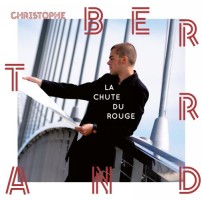Descending
|
Dan Albertson [January 2016.] [To my mother, for enabling a sense of wonder, on the occasion of her 60th birthday.]
Christophe BERTRAND: Treis (2000)1; Ektra (2001)2; Skiaï (1998)3; Arashi (2008)4; Haos (2003)5; Satka (2008)6; La Chute du rouge (2000)7. Olivier Class (fl)2, Szuhwa Wu (vn)1, Vincent Royer (va)4, Anıl Eraslan (vc)1, Maxime Springer (pf)1, 5, Ensemble In Extremis3, 7, Court-circuit6, Jean Deroyer (cond.)6. Motus M214008 (http://www.motus.fr/). Recent Francophone music has a roll call of what-ifs: Jean-Pierre Guézec (1934-71), for instance, whose small catalogue hints at a synthesis of Messiaen and Varèse, or Jean-Louis Robert (1948-79), a Belgian disciple of Pousseur, or the Québécois orphan Claude Vivier (1948-83), who needs no introduction, or Dominique Troncin (1961-94), whose music has a special tenderness, or Pierre-Jean Grassi (1966-86; yes, those years are correct, thanks to cystic fibrosis), who left only a handful of works. Alongside these cases, Jean Barraqué, allotted 45 years, resembles Methuselah. The latest registrant in this roster is Christophe Bertrand (1981-2010). Equal parts composer and pianist, a student of Ivan Fedele, he matured too quickly and, one supposes, burned out too quickly, too. This CD is the first public documentation of his output. It helps to answer the question, “what if?”, but the major fault is its skew toward early works, with only three pieces dating from his mature phase. Four works written when he was 17-20 frame a trio of pieces written between ages 22-27. The first and last pieces of the early quartet leave the best impressions. The piano trio Treis moves from plaintive sparseness, with hesitation, to an agitated solo for cello, which then swings the pendulum irrevocably toward propulsion. Ektra presents nothing essential for the flute. The quietude and slow pacing of Skiaï mark a detour from both his early and late preoccupations yet the material itself is unmemorable. La Chute du rouge for clarinet, cello, piano and vibraphone takes its form from tanka and its title from a painting by Philippe Cognée. Progress toward the abyss is disjointed and interrupted. Bertrand himself is the pianist on this recording. His softness of touch impresses. The mature trio begins with Arashi (“storm”). Less than 5 mins. in duration, it shows the limit of his technique on a solo instrument; though he imagines polyphony, he needs other instruments here. The recording is close and aggressive, as must be the point. The recording of Haos ends abruptly, perhaps even prematurely, as resonance from the highest notes on the keyboard accumulates. The music itself alternates the rhythmic and the static, to great ends. The sextet Satka, 17 continuous sections exploring Fibonacci numbers, whirls away almost without respite. Is interpreting its unceasing winding-up and winding-down as a metaphor for the futility of existence a stretch? I think not. Satka is reason enough to get acquainted with Bertrand, but much else from his final years merits discovery: the piano quartet Hendeka and the string quartet Quatuor II, for instance, or the orchestral pieces Okhtor and Vertigo, the former a foreshadowing of his suicide (its title is Rothko in retrograde) and the latter a showpiece with two pianos. A representation of a composer on the verge of brilliance, this recording is essential and, for now, the only option. One hopes that an issue of better and more characteristic works will emerge. Until then, the portrait is mostly one of a young man, not what he became.
[More Dan Albertson]
[More
Bertrand]
[Previous Article:
String Theory 16: 17 Quartets, some with voices, tapes, etc.]
[Next Article:
Used Bin Troll Tweets P.]
|
